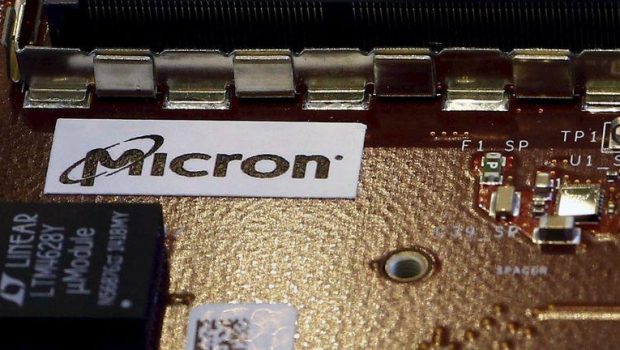Micron Technology (NASDAQ:MU) Seems To Use Debt Quite Sensibly
https://www.ispeech.org/text.to.speech
Legendary fund manager Li Lu (who Charlie Munger backed) once said, 'The biggest investment risk is not the volatility of prices, but whether you will suffer a permanent loss of capital.' So it might be obvious that you need to consider debt, when you think about how risky any given stock is, because too much debt can sink a company. Importantly, Micron Technology, Inc. (NASDAQ:MU) does carry debt. But is this debt a concern to shareholders?
What Risk Does Debt Bring?
Debt assists a business until the business has trouble paying it off, either with new capital or with free cash flow. If things get really bad, the lenders can take control of the business. However, a more frequent (but still costly) occurrence is where a company must issue shares at bargain-basement prices, permanently diluting shareholders, just to shore up its balance sheet. Of course, plenty of companies use debt to fund growth, without any negative consequences. When we think about a company's use of debt, we first look at cash and debt together.
Check out our latest analysis for Micron Technology
How Much Debt Does Micron Technology Carry?
As you can see below, Micron Technology had US$6.10b of debt, at December 2021, which is about the same as the year before. You can click the chart for greater detail. However, it does have US$9.58b in cash offsetting this, leading to net cash of US$3.48b.
How Healthy Is Micron Technology's Balance Sheet?
According to the last reported balance sheet, Micron Technology had liabilities of US$6.51b due within 12 months, and liabilities of US$8.83b due beyond 12 months. On the other hand, it had cash of US$9.58b and US$5.25b worth of receivables due within a year. So it has liabilities totalling US$508.0m more than its cash and near-term receivables, combined.
Having regard to Micron Technology's size, it seems that its liquid assets are well balanced with its total liabilities. So while it's hard to imagine that the US$89.0b company is struggling for cash, we still think it's worth monitoring its balance sheet. While it does have liabilities worth noting, Micron Technology also has more cash than debt, so we're pretty confident it can manage its debt safely.
Even more impressive was the fact that Micron Technology grew its EBIT by 152% over twelve months. That boost will make it even easier to pay down debt going forward. There's no doubt that we learn most about debt from the balance sheet. But ultimately the future profitability of the business will decide if Micron Technology can strengthen its balance sheet over time. So if you want to see what the professionals think, you might find this free report on analyst profit forecasts to be interesting.
But our final consideration is also important, because a company cannot pay debt with paper profits; it needs cold hard cash. Micron Technology may have net cash on the balance sheet, but it is still interesting to look at how well the business converts its earnings before interest and tax (EBIT) to free cash flow, because that will influence both its need for, and its capacity to manage debt. Looking at the most recent three years, Micron Technology recorded free cash flow of 28% of its EBIT, which is weaker than we'd expect. That's not great, when it comes to paying down debt.
Summing up
We could understand if investors are concerned about Micron Technology's liabilities, but we can be reassured by the fact it has has net cash of US$3.48b. And it impressed us with its EBIT growth of 152% over the last year. So we don't think Micron Technology's use of debt is risky. The balance sheet is clearly the area to focus on when you are analysing debt. But ultimately, every company can contain risks that exist outside of the balance sheet. For example - Micron Technology has 1 warning sign we think you should be aware of.
At the end of the day, it's often better to focus on companies that are free from net debt. You can access our special list of such companies (all with a track record of profit growth). It's free.
Have feedback on this article? Concerned about the content? Get in touch with us directly. Alternatively, email editorial-team (at) simplywallst.com.
This article by Simply Wall St is general in nature. We provide commentary based on historical data and analyst forecasts only using an unbiased methodology and our articles are not intended to be financial advice. It does not constitute a recommendation to buy or sell any stock, and does not take account of your objectives, or your financial situation. We aim to bring you long-term focused analysis driven by fundamental data. Note that our analysis may not factor in the latest price-sensitive company announcements or qualitative material. Simply Wall St has no position in any stocks mentioned.








Gloss